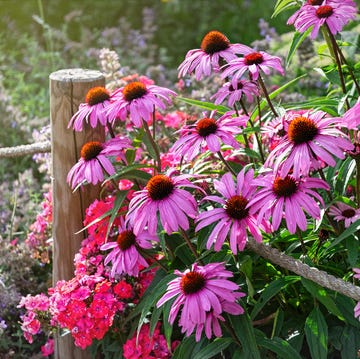20 Common Types of Weeds & How to Control Them
The first step to removing them is identification.

Weeds—we can't live with them and, unfortunately, we can't live without them. But what we can do is find a way to control them. It all starts with understanding their biology and habits. By learning about the different common types of weeds, their life cycles, and preferred habitats, we can develop effective strategies for prevention and management.
How do I get rid of weeds forever?
According to Sally McCabe, associate director of community education at the Pennsylvania Horticultural Society, the first thing to know about weeds is that they can never be completely eradicated. "Weeds have a stick-to-itiveness that we can’t overcome, and sometimes its better to pick our battles," she explains. "Weeds are incredibly resilient and need very little sunlight and water to thrive. Every time you pull one weed, you expose new soil to sunlight, and if that soil contains more seeds, more weeds can easily grow in its place. However, if you plant grasses that are well-suited to your soil and climate conditions, your lawn will be able to compete with weeds naturally."
What's the best way to get rid of weeds?
Weeds are merely plants that are growing where we don’t want them to be. The first step to removing them is identification. "Some weeds can be eaten, others transplanted, but most need to be removed to give room to our intentional crops or lawn," McCabe says. She recommends the following steps:
- Mow what you have (weeds or grass). If the weeds have not gone to seed and are not diseased, you can add them to your compost pile.
- Dig or pull weeds by hand. You can weed at any time of the year, but the best time to pull weeds is after it has rained, when the soil is moist and loose.
- Use a pre-emergent and post-emergent product. Some experts recommend using these products as a way to prevent widespread weeds. However, McCabe cautions against this option "due to the harmful chemicals they put into the soil and expose pets and wildlife to."
Another thing to keep in mind is that, despite their undesirable presence, weeds often play important ecological roles. They provide food and habitat for pollinators, improve soil health through nutrient cycling, and stabilize disturbed areas to prevent erosion.
"It may be necessary to shift your attitude towards weeds, and realize that without them, your garden or lawn loses crop diversity, which can make it more susceptible to pests and diseases," McCabe says. "For instance, people assume that dandelions in your garden are weeds, but other people find dandelions to be food, medicine, beauty, wine, etc.— one man’s weed is another man’s treasure!"
With that being said, let's go back to step one, identification, and take a look at some of the most common types of weeds.

Tierney McAfee is a freelance writer and Country Living and The Pioneer Woman contributor who covers entertainment, holiday & entertaining, food & drinks, design ideas, DIY, and more.


This Is the Best Time of Day To Mow Your Lawn

How to Make a Decorative Fall Scarecrow

These Outdated Home Items Might Age Your Space

The Most Charming Farmhouse Décor for Your Home



























